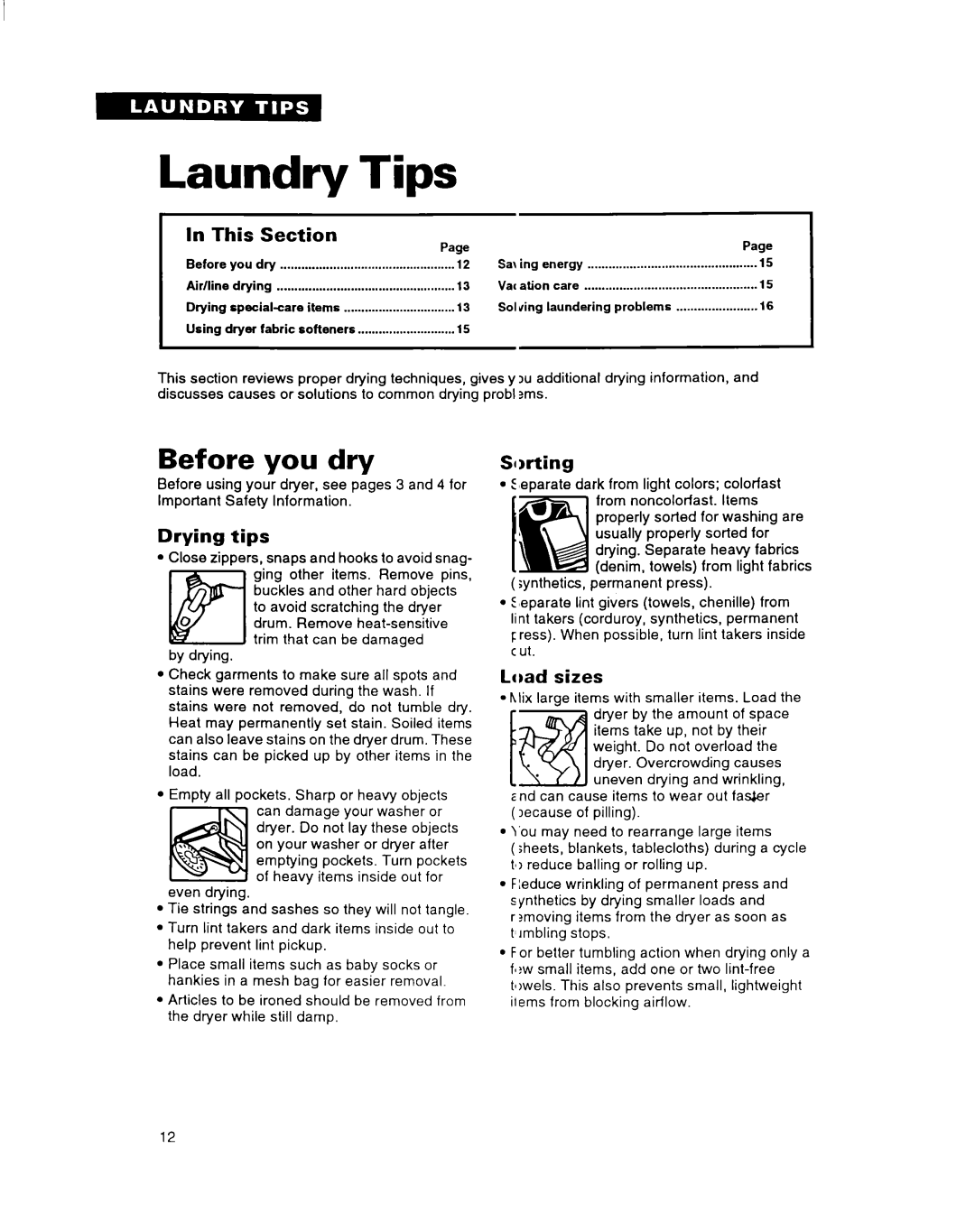
Laundry | Tips |
|
|
| ||||
I | In This | Section | Page |
|
| Page | ||
|
|
| ||||||
|
|
|
|
|
|
| ||
| Before | you | dry | 12 | Sal ing | energy | 15 | |
| Air/line | drying | 13 | Vat ation | care | .15 | ||
| Drying | specialcare | items | ................................ 13 | Solving | laundering problems | .16 | |
| Using | dryer | fabric | softeners | ............................ 15 |
|
|
|
This section reviews proper drying techniques, gives y NJ additional drying information, and discusses causes or solutions to common drying probl ?ms.
Before you dry
Before using your dryer, see pages 3 and 4 for Important Safety Information.
Drying tips
l Close zippers, snaps and hooks to avoid snag- ging other items. Remove pins, buckles and other hard objects to avoid scratching the dryer drum. Remove
trim that can be damaged
l Check garments to make sure all spots and stains were removed during the wash. If stains were not removed, do not tumble dry. Heat may permanently set stain. Soiled items can also leave stains on the dryer drum. These stains can be picked up by other items in the load.
. | ckets. Sharp or heavy objects |
| can damage your washer or |
| dryer. Do not lay these objects |
| on your washer or dryer after |
| emptying pockets. Turn pockets |
| of heavy items inside out for |
even drying.
l Tie strings and sashes so they will not tangle. l Turn lint takers and dark items inside out to
help prevent lint pickup.
l Place small items such as baby socks or hankies in a mesh bag for easier removal.
l Articles to be ironed should be removed from the dryer while still damp.
Sorting
l Iseparate dark from light colors; colorfast from noncolorfast. Items properly sorted for washing are usually properly sorted for drying. Separate heavy fabrics (denim, towels) from light fabrics
(synthetics, permanent press).
l Z’eparate lint givers (towels, chenille) from lint takers (corduroy, synthetics, permanent Fress). When possible, turn lint takers inside c ut.
Load sizes
l hlix large items with smaller items. Load the dryer by the amount of space items take up, not by their weight. Do not overload the dryer. Overcrowding causes
1uneven drying and wrinkling, i nd can cause items to wear out fas$er (lecause of pilling).
l 1.0~ may need to rearrange large items (;heets, blankets, tablecloths) during a cycle t81reduce balling or rolling up.
l Fleduce wrinkling of permanent press and synthetics by drying smaller loads and
r ?moving items from the dryer as soon as t’lmbling stops.
l For better tumbling action when drying only a fl:w small items, add one or two
12
